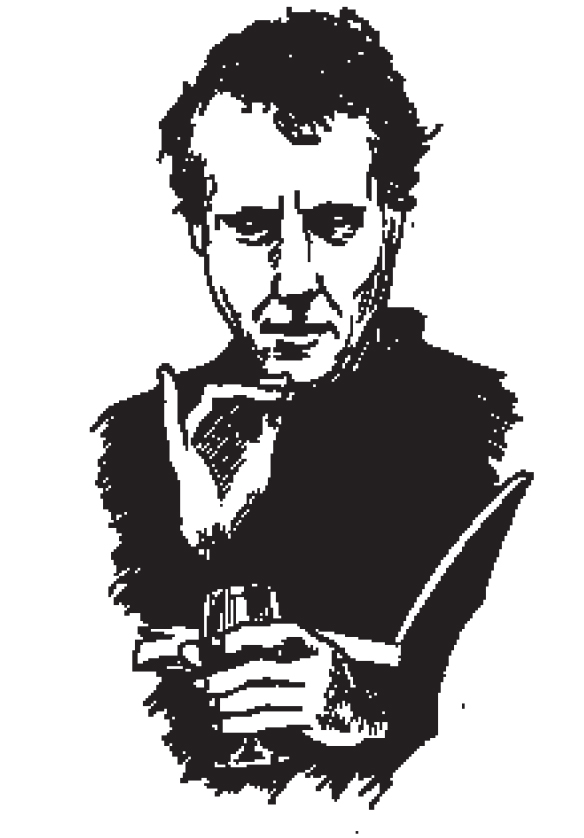Raymond Pettibon raises dogs. Pitbulls and mastiffs mostly. They live in breeding sheds and kennels in his backyard. Some are “sporting” dogs that he trains and fights in and around Southern California and Mexico. One is a full brother to Bain, a former Yojimbo in the world of dog fighting, the sport of kings. Mention Bain to anyone in the dog-fighting business, Pettibon tells me, and, well, you get this certain look.
Pettibon unloads all of this in the middle of a conversation ranging from punk-rock history to horse pedigrees to comic books to art criticism. On the subject of dogs he suddenly seems to feel like he’s revealed way more than he intended. So he drops it. This is the way with Pettibon. In his pogo-ing from topic to topic he is both excessively careful with his words and bluntly indiscreet. It’s a quality that also comes across in his drawings.
Born in Tucson, Arizona, and raised in Hermosa Beach, California, Pettibon sacrificed a career as a public-school math teacher for a desperate, thankless existence as an internationally exhibited artist and dog fighter. His art career began in the mid-1970s when his brother Greg, a guitarist for the seminal punk band Black Flag, founded SST Records. Pettibon became the label’s unofficial artist, creating album covers and concert flyers for Black Flag, the Minutemen, and others. His style—a pairing of figurative drawings and text done in black ink on paper—is often associated with the seventies punk counterculture of his youth. But Pettibon will tell you that’s a brainless oversimplification.
Though he vigorously resists attempts to categorize his art, Pettibon acknowledges a debt to various sources of inspiration: comics, noir films, books, television, pop icons. His work can sometimes seem like a cataloging of pop-cultural moments. Charles Manson, Ronald Reagan, and other broken, twisted speed freaks figure prominently, as do punks, surfers, hippies, baseball players, locomotives, and Gumby. Whole phrases are lifted directly from books—Henry James, Fernando Pessoa, William Blake, the Bible—or are reshaped and given new meaning by the artist.
Despite this, Pettibon’s art is also deeply personal. Each drawing seems oddly idiosyncratic, almost painfully revealing. Individually, each is like a snapshot of a larger narrative.
The following interview was culled from a couple of marathon phone conversations with Pettibon from his home in Long Beach.
—John O’Connor
I. “COMICS ARE OFTEN DISMISSED OUT-OF-HAND AS BEING WORTHLESS,
OR FOR CHILDREN ONLY, OR EVEN HARMFUL TO CHILDREN.”
THE BELIEVER: To what extent did your art come out of the punk scene?
RAYMOND PETTIBON: The art preceded punk. I don’t know if it’s really possible to trace back and see if there’s a progression, a timeline, in any coherent sense,...
You have reached your article limit
Sign up for a digital subscription and continue reading all new issues, plus our entire archives, for just $1.50/month.
Already a subscriber? Sign in





